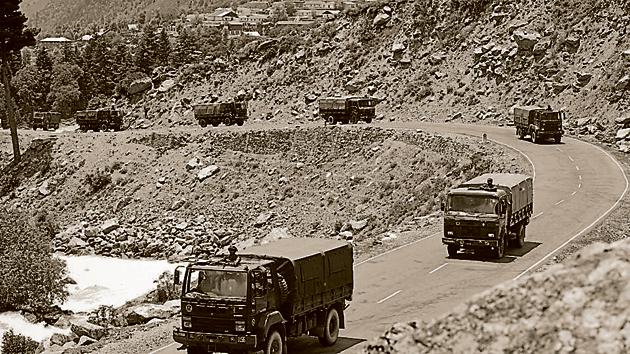On China, the Indian government needs to communicate better
To lose the information war is to let down brave soldiers. Emulate the positive lessons from Kargil
It could take the next few weeks, maybe even months, to resolve (or not) the border stand-off with the Chinese in eastern Ladakh. This gives the government another chance at adopting a clearer strategic communications strategy. Over the last two months, if there is one lesson that should leap out at those who manage the messaging of the Narendra Modi government, it is this: Throwing a veil of secrecy over what’s happening on the ground in the upper reaches of the Himalayas has only led to the proliferation of rumours, fake news, WhatsApp memes and often, a last-laugh advantage to our adversary.

Yes, every serious journalist understands that operational details cannot and must not be disclosed. And yes, every serious journalist who follows the military would have cultivated enough sources to ferret out an approximate version of how events unfolded.
But that has not prevented multiple contradictions, denials and obfuscations at the official level. And tragically, it has led to the smearing and slandering of military veterans who have dared to express scepticism or ask tough questions.
I witnessed this information clampdown first-hand in Ladakh after spending four days at ground zero. Returning 21 years after the Kargil conflict, which I had the privilege to report from the frontline, the contrast could not have been more glaring. News teams were allowed to go no further than the city limits, and even within that, the headquarters of the 14 Corps was off-limits. Journalists could gaze up at the clear blue skies to see fighters and Apaches break the silence of the town every 15 minutes. But the road to Galwan was blocked 300 kilometres from the last accessible point on the Leh-Manali road. Restrictions on physical movement may still make sense, of course, but to not brief, even on background, reporters present on the ground — and to not allow the military to do so either — is self-defeating. Think of Kargil, a pre-live telecast war, fought before there were mobile phones and satellite vans in Jammu and Kashmir. There was no notion of the journalist embedded with the military then in India. We were a handful of young reporters ready to take risks. But, even in the middle of an ongoing war, right at the frontline, we were allowed to meet and talk with soldiers and briefed regularly on what we could say, show and not say. Back in Delhi, officials of the external affairs ministry and the Indian Army joined hands to host daily afternoon briefings. General Bikram Singh, who went on to become the Chief of the Army Staff and Raminder Jassal, the fine, ever-smiling diplomat who never flinched from a single question, became the face of those televised interactions. The result — the news media became a force multiplier for India’s interests. There was an unprecedented outpouring of solidarity for the soldiers. The country stood united against Pakistan. And there was a singular narrative to the Kargil story.
This time, the government first chose not to share the fact of the Chinese transgression with the public. Then, when 20 of our men died in the line of duty, fighting close to 300 troops of the People’s Liberation Army (PLA), what followed, in terms of communication, was a classic lesson in what not to do in times of a sensitive military challenge. Prime Minister (PM) Modi’s own comments at the all-party meeting had to be clarified. Even the clarification took a day. By that time, the Chinese had waded into the swamp of information chaos.
Even today, we have only dribs and drabs of information, often contradictory, on what is happening with the Chinese in sensitive areas such as Pangong Tso and the Depsang plains. In Ladakh, villagers from the border areas like Durbuk and Shyok told me, “Where our horses used to once go for pasture, we now see the Chinese.” The head of the Ladakh Buddhist Association, PT Kunzang, an admirer of the PM, told me that people in Leh hoped for the “same response in Ladakh as the government had after Pulwama. If we don’t act strongly now, the Chinese may be sitting right here in Leh next.”
Those who understand mountain warfare know that drawing parallels with Pulwama is easier said than done. As Colonel Sonam Wangchuk, a hero of the 1999 war, who ousted the Pakistanis from a vertical peak of 18,000 feet, told me, “To militarily oust the Chinese from the heights would need the wherewithal of war. You can’t do this with small arms. You need artillery, maybe even artillery as direct firing.”
No one is advocating war. But to manage expectations, sentiments and above all the Chinese, you need a cohesive, coherent, real-time strategic communication model.
To lose the information war is to let down our soldiers who are fighting on the actual battlefield.






